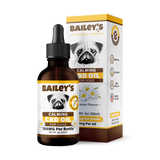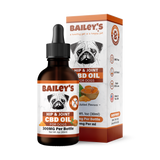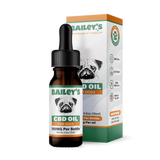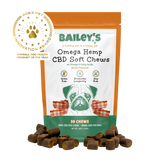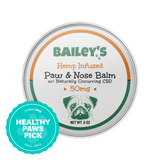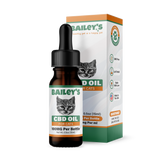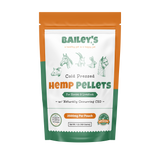The Spectrum of the Cannabis Plant

Here's what's hidden in the leaf!
Cannabis is Nature's gift to us, a plant with many uses. People have used this beneficial plant for thousands of years, yet the complex chemistry is only beginning to be understood.
Listed are the most common cannabinoids, terpenes and flavonoids found in cannabis sativa plants, along with some of their known effects. We hope that this information will help you in selecting strains of cannabis that will be right for you.
Cannabinoids
Here are the most common cannabinoids found in cannabis. Also listed is anandamide, or AEA, the best known of our body’s own endocannabinoids.
Cannabinoids and other compounds in cannabis elicit various effects when they bind to receptor sites in the cell walls of our bodies, illustrating our close relationship with the cannabis plant.
CB1 Receptors in Mammals
CB1 receptors are found primarily in the brain. They are also present in both the male and female reproductive systems.
CB1 receptors are absent in the medulla oblongata, the part of the brain stem responsible for respiratory and cardiovascular functions.
Thus, there is not the risk of respiratory or cardiovascular failure that can be induced by some drugs. CB1 receptors appear to be responsible for the euphoric and anticonvulsive effects of cannabis.
CB2 Receptors in Mammals
CB2 receptors are predominantly found in the immune system, with the greatest density in the spleen. CB2 receptors appear to be responsible for the anti-inflammatory and other therapeutic effects of cannabis.
What is THC?
THC or tetrahydrocannabinol is found mostly in the "marijuana" variety of the cannabis sativa plant. The "hemp" variety of the cannabis sativa plant is defined by having less than 0.3% Delta-9 THC here in the United States under the farm bill of 2018. THC is well known around the world for its psychoactivity. Effects include:
- psychoactive
- euphoria
- sensory enhancement
- anti-cancer, anti-nausea
- pain relief
- improves appetite
- help for glaucoma
- muscle relaxant
- help for autoimmune disorders
- anti-inflammatory
What is CBD?
CBD or cannabidiol is a cannabinoid that is not psychoactive, yet it modifies the effects of THC. CBD has been gaining considerable popularity world-wide in the past decade due to its great medical potential for both humans and pets alike. Potential effects of CBD include:
- anti-depressant
- anti-cancer
- anti-nausea
- anxiolytic
- pain relief
- mitigates spasms
- improves blood circulation
- help for autoimmune disorders
- bone stimulant
What is CBG?
CBG or cannabigerol is not psychoactive. It is commonly found in large quantities in industrial hemp. Certain medical strains have considerable CBG, which has promise for its anti-tumor qualities. Potential effects include:
- promising as an anti-cancer agent
- lowers blood pressure
- anti-inflammatory
- bone stimulant
What is THCV?
THCV or tetrahydrocannabivarin is not psychoactive, but moderates some of the effects of THC. THCV is present in certain strains of cannabis, notably ones originating from Southeast Asia or South Africa. Potential effects include:
- decreases appetite
- mitigates seizures
- bone stimulant
- and may help with diabetes
What is CBN?
CBN or cannabinol is primarily a decomposition product of THC from exposure to heat or light. Traditionally, very little CBN is found in fresh plants. CBN has only mild psychoactivity, and potential effects include:
- relief from pain
- causes drowsiness
- mitigates spasms
- help for glaucoma
- anti-inflammatory
What is CBC?
CBC or cannabichromene is a minor cannabinoid that is not psychoactive. In recent years, certain strains from industrial hemp have become popular for their increasing presence of this cannabinoid. Potential effects include:
- anti-cancer
- antibacterial
- anti-fungal
- anti-inflammatory
- analgesic
- bone stimulant
What is Anandamide?
Anandamide, or AEA, is one of the endocannabinoids found naturally occurring in the human body, and has a chemical structure unlike the phytocannabinoids found in cannabis. Anandamide regulates the functions of our central nervous system and our immune system. AEA regulates appetite, memory, sensations of pleasure and pain, our immune system, and sleep patterns. It also inhibits certain cancers, such as breast cancer in humans.
What are Terpenes?
Terpenes (terpenoids) are components of the essential oils and resins found in many plants, and especially in cannabis sativa plants. Terpenes synergize with and modify the effects of THC and other cannabinoids. We are only beginning to understand their effects and interactions with the phytocannabinoids in cannabis and the endocannabinoids in our bodies. From over 100 terpenes possible in the cannabis plant, here are some of the more common terpenes present in cannabis.
Terpenes are classified based on the attached isoprenoid unit as:
- Monoterpenes (2 isoprenoid units and 10 carbon atoms)
- Sesquiterpenes (3 isoprenoid units and 15 carbon atoms)
- Diterpenes (4 isoprenoid units and 20 carbon atoms)
- Sesterterpenes (5 isoprenoid units and 25 carbon atoms)
- Triterpenes (6 isoprenoid units and 30 carbon atoms)
- Tetraterpenes (8 isoprenoid units and 40 carbon atoms)
- Polyterpenes ( many isoprenoid units)
What is Beta-Myrcene?
Beta-myrcene is a terpene that is found in cannabis in abundance, especially in the tropical sativas, and enhances absorption of cannabinoids. It smells like cloves, citrus and fruit. Effects of beta-myrcene include:
- analgesic
- anti-inflammatory
- muscle relaxant
- anti-depressant
- antibiotic
- blocks certain carcinogens such as aflatoxin B
High levels of beta-myrcene are found in the cannabis strain White Widow and Neville’s Haze.
What is Limonene?
Limonene is a terpene that notably smells like oranges, and is abundant in citrus fruits. Effects of limonene include:
- relaxation
- enhanced alertness
- focus
- anti-depressant
- anti-cancer
- antibiotic
- anti-fungal
- helps with absorption of cannabinoids
Limonene is abundant in the strains Lemon Skunk and Big Bang.
What is Beta-Caryophyllene?
Beta-caryophyllene, a terpene also known as BCP, binds to the CB2 receptor site, and thus is the first known food cannabinoid. It is not psychoactive. Most cannabis strains contain large amounts of beta-caryophyllene. It is analgesic and anti-inflammatory.
What is Beta-pinene?
Beta-pinene is a terpene that can increase mental focus and energy, and enhances memory, as well as acting as a bronchodilator. It has the familiar pine tree odor. A related terpene, alpha-pinene, is found at high levels in Super Silver Haze and possibly in Great White Shark.
What is Terpineol?
Terpineol is a terpene that smells floral, like lilac, apple and orange blossoms. Terpineol may be the cause of "couch lock" in humans after smoking some strains of cannabis, and it acts as a sedative. This terpene is known to be helpful for insomnia.
What is Borneol?
Borneol is a terpene that smells like menthol or camphor, pine or woody. It is calming, sedative and relaxing, and is used for recovery from stress or illness. Borneol is likely abundant in the cannabis strain Silver Haze.
What is Delta-3-Carene?
Delta-3-Carene is a terpene that has a sweet, pungent, woodsy scent. It may contribute to dry eyes and mouth from smoking certain strains of cannabis.
What is Linalool?
Linalool is a terpene that has a sweet, floral scent. Linalool is strongly sedative, especially when inhaled, and may lead a person into sleep. It also may be anti-cancer.
What is 1,8-Cineole?
1,8-Cineole is a terpene that is known to be spicy, camphor, minty and refreshing. It is helpful for circulation and pain relief, and effects are also thought-provoking and stimulating.
What is Sabinene?
Sabinene is a terpene that has a spicy scent, and may act as an anti-depressant. It is found in high amounts in Super Silver Haze and in Arjan’s Ultra Haze #1.
Flavonoids
Flavonoids are polyphenols ubiquitous in plants and constituents of many foods that we eat. They may modify the way our bodies respond to allergens, viruses, and carcinogens, and studies indicate that flavonoids may help in the prevention of certain cancers and cardiovascular diseases, as well as being anti-inflammatory and antioxidants. Over 20 flavonoids are found in cannabis. Here are some of the more common flavonoids in cannabis.
Cannflavin A and B: Cannflavin A and B appear to be the prevalent flavonoids in cannabis. They are COX-2 inhibitors (anti-inflammatory and pain relieving, as well as potentially anti-cancer), and Lipoxygenase (LO) inhibitors (anti-inflammatory). Cannflavin A and B also inhibit prostaglandin E2 production.
Apigenin: These flavonoids are anxiolytic (anti-anxiety and anti-panic), anti-tumor, anti-depressant, and anti-inflammatory.
Quercetin: These flavonoids are antioxidant, anti-mutagenic, antiviral, antihistamine, and anti-neoplastic (anti-cancer/tumor).
Brand Statement:
Our hemp derived pet CBD products here at Bailey's CBD For Pets are notable for their full spectrum properties, which is why we wanted to make this comprehensive guide for users to understand the multitude of naturally occurring properties retained in our full spectrum CBD oil for dogs and CBD treats for dogs.
All mammals have an endocannabinoid system, and Bailey's is partnered with respected clinical veterinarian Dr. Robert J. Silver, DVM to help formulate and provide accompanying use guidance for each product, which is made intently for pets in need of holistic health support.
View all of our CBD for dogs offerings here. If you have any questions, our team is here to help. You can give us a call at our world famous pet CBD hotline at 1(844)738-7223 or by email at info@baileyscbd.com.
SPECTRUM GLOSSARY:
Terpenes: Terpenes and terpenoids are the primary constituents of the essential oils of many types of plants and flowers. Essential oils are used widely as natural flavor additives for food, as fragrances in perfumery, and in traditional and alternative medicines such as aromatherapy. Synthetic variations and derivatives of natural terpenes and terpenoids also greatly expand the variety of aromas used in perfumery and flavors used in food additives. Vitamin A is a terpene. Terpenes are released by trees more actively in warmer weather, acting as a natural form of cloud seeding. The clouds reflect sunlight, allowing the forest to regulate its temperature. The aroma and flavor of hops, highly desirable in some beers, comes from terpenes. Of the terpenes in hops myrcene, β-pinene, β-caryophyllene, and α-humulene are found in the largest quantities
Sesquiterpenes: A class of terpenes that consist of three isoprene units and have the molecular formula C15H24. Like monoterpenes, sesquiterpenes may be acyclic or contain rings, including many unique combinations. Biochemical modifications such as oxidation or rearrangement produce the related sesquiterpenoids. Sesquiterpenes are found naturally in plants and insects, as semiochemicals, e.g. defensive agents or pheromones.
Cannabinoids (THC,THCV,CBD,CBN,CBG,CBC): A class of diverse chemical compounds that act on cannabinoid receptors on cells that repress neurotransmitter release in the brain. These receptor proteins include the endocannabinoids (produced naturally in the body by humans and animals), the phytocannabinoids (found in cannabis and some other plants), and synthetic cannabinoids (manufactured chemically). The most notable cannabinoid is the phytocannabinoid ∆9-tetrahydrocannabinol (THC), the primary psychoactive compound of cannabis. Cannabidiol (CBD) is another major constituent of the plant, representing up to 40% in extracts of the plant resin. There are at least 85 different cannabinoids isolated from cannabis, exhibiting varied effects.
Chlorophyll: A green pigment found in cyanobacteria and the chloroplasts of algae and plants. Its name is derived from the Greek words χλωρός, chloros ("green") and phyllon ("leaf").
Chlorophyll is an extremely important biomolecule, critical in photosynthesis, which allows plants to absorb energy from light
Flavonoids: (or bioflavonoids) (from the Latin word flavus meaning yellow, their color in nature) are a class of plant secondary metabolites. Flavonoids have been shown to have a wide range of biological and pharmacological activities in in vitro studies. Examples include anti-allergic, anti-inflammatory, antioxidant, anti-microbial (antibacterial, antifungal, and antiviral, anti-cancer, and anti-diarrheal activities
Waxes: Especially in warm climates, plants secrete waxes as a way to control evaporation and hydration.
Pigments: The primary function of pigments in plants is photosynthesis, which uses the green pigment chlorophyll along with several red and yellow pigments that help to capture as much light energy as possible.
Pectins: In plant biology, pectin consists of a complex set of polysaccharides (see below) that are present in most primary cell walls and are particularly abundant in the non-woody parts of terrestrial plants.
Pectin is a major component of the middle lamella, where it helps to bind cells together, but is also found in primary cell walls. The amount, structure and chemical composition of pectin differs among plants, within a plant over time, and in various parts of a plant.
Pectin is an important cell wall polysaccharide that allows primary cell wall extension and plant growth. During fruit ripening, pectin is broken down by the enzymes pectinase and pectinesterase, in which process the fruit becomes softer as the middle lamellae break down and cells become separated from each other.
A similar process of cell separation caused by the breakdown of pectin occurs in the abscission zone of the petioles of deciduous plants at leaf fall. Pectin is a natural part of the human diet, but does not contribute significantly to nutrition.
The daily intake of pectin from fruits and vegetables can be estimated to be around 5 g (assuming consumption of approximately 500 g fruits and vegetables per day).
In human digestion, pectin binds to cholesterol in the gastrointestinal tract and slows glucose absorption by trapping carbohydrates. Pectin is thus a soluble dietary fiber.
Consumption of pectin has been shown to reduce blood cholesterol levels. The mechanism appears to be an increase of viscosity in the intestinal tract, leading to a reduced absorption of cholesterol from bile or food.
In the large intestine and colon, microorganisms degrade pectin and liberate short-chain fatty acids that have positive influence on health (prebiotic effect).
Sugars: A short-chain, soluble carbohydrates, many of which are used in food. They are carbohydrates, composed of carbon, hydrogen, and oxygen. There are various types of sugar derived from different sources. Simple sugars are called monosaccharides and include glucose (also known as dextrose), fructose and galactose.
Fats: Plant fats/oils or vegetable oils are oils derived from plant sources, as opposed to animal fats or petroleum. There are three primary types of plant oil, differing both the means of extracting the relevant parts of the plant, and in the nature of the resulting oil:
- Vegetable fats and oils were historically extracted by putting part of the plant under pressure, squeezing out the oil.
- Macerated oils consist of a base oil to which parts of plants are added.Essential oils are composed of volatile aromatic compounds, extracted from plants by distillation
Lignin: A complex polymer of aromatic alcohols known as monolignols. It is most commonly derived from wood, and is an integral part of the secondary cell walls of plants and some algae. The term was introduced in 1819 by de Candolle and is derived from the Latin word lignum, meaning wood. It is one of the most abundant organic polymers on Earth, exceeded only by cellulose. Lignin constitutes 30% of non-fossil organic carbon and a quarter to a third of the dry mass of wood.
Starches: A carbohydrate consisting of a large number of glucose units joined by glycosidic bonds. This polysaccharide is produced by most green plants as an energy store. It is the most common carbohydrate in human diets and is contained in large amounts in such staple foods as potatoes, wheat, maize (corn), rice, and cassava.
Cellulose: An organic compound with the formula (C 6H 10O 5) n, a polysaccharide consisting of a linear chain of several hundred to over ten thousand β(1→4) linked D-glucose units. Cellulose is an important structural component of the primary cell wall of green plants
Disclosure: This reference page lists the most common cannabinoids, terpenes and flavonoids found in cannabis, along with some of their generally accepted known effects and is intended as a general reference brochure. These statements have not been evaluated by the food and drug administration and is not intended to diagnose, treat, cure or prevent any disease or health condition.
References:
http://en.wikipedia.org/wiki/Cannabinoids
http://en.wikipedia.org/wiki/Anandamide
http://en.wikipedia.org/wiki/Flavonoid
http://greenhouseseeds.nl/shop/terpens-in-resin.html#11
http://berkeleypatientscare.com/2010/10/08/terpenes-terpenoids-and-cannabis/
(Source for Glossary definitions, WikiPedia and private research)

